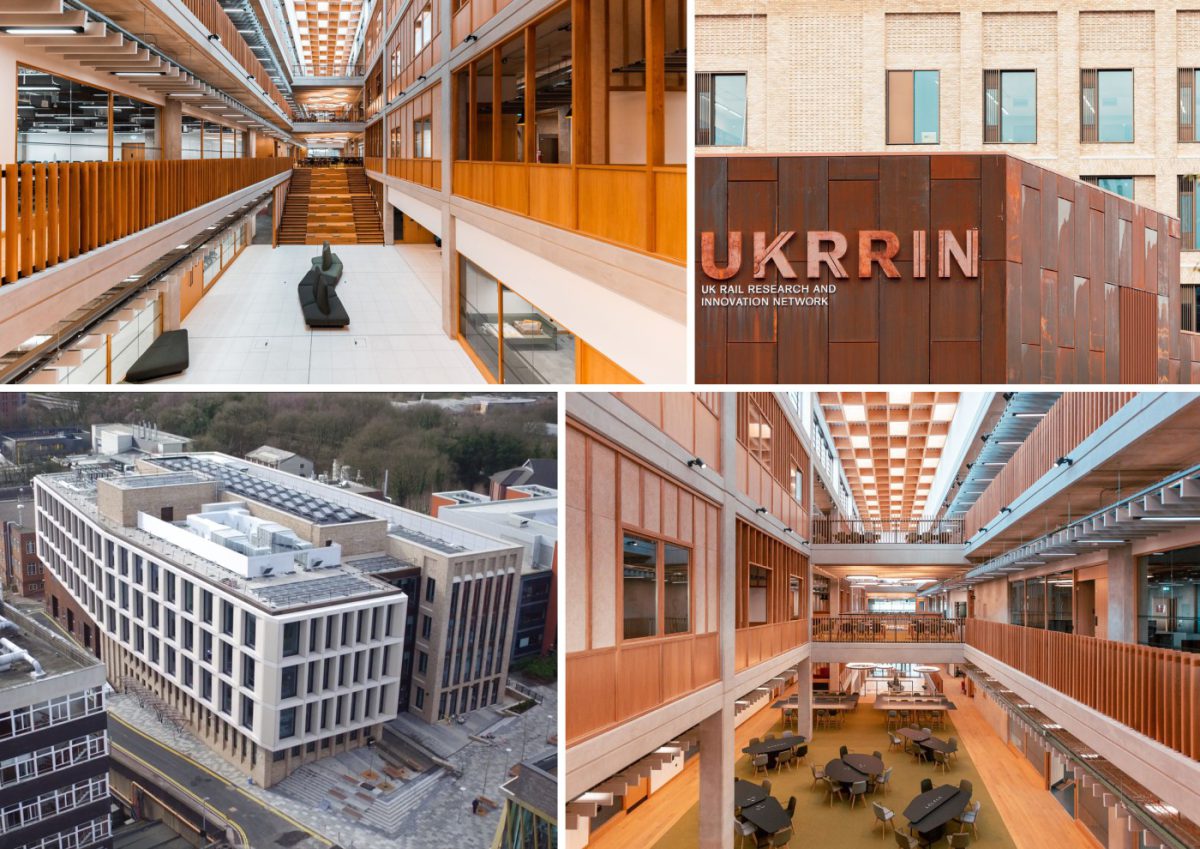From the outset University of Birmingham (UoB), the contracting client created conditions for this project to be successful from the start.
The £46.5m Engineering Building at University of Birmingham is a 12,000sqm beacon of engineering excellence situated in the heart of campus. Its aim was for the building to be an educational tool in its own right, with many elements on show for students to explore and investigate. The development, which comprises two facilities designed to integrate academia and industry, celebrates engineering by bringing multi-disciplines together. The objective was to broaden the student experience in a more holistic approach, mirroring the workplace to shape the engineers of the future.
This vision was clearly outlined in tender documents. The multiple stakeholders from academia and industry was clearly defined, so that the successful contractor would be in no doubt of the high expectations for delivery and complexity of the building. Contractor selection was determined via a framework, building on longstanding relationships.
From the outset, UoB focused on value and was not driven purely on cost. They valued the other elements of what the selected contractor offered in terms of student engagement, social value and impact on local economies. In addition, was able to utilise Willmott Dixon’s Energy Synergy model for predicting in use energy consumption. They embraced prefabricated elements and a number of packages had off site manufactured elements – such as service risers and roof plant room.
Through the challenges of the pandemic the whole team pulled together, embraced construction leadership council guidance on best practice safety advice. Through client/contractor collaboration the project was able to keep moving with over 200 operatives working on site to minimise any delays. UoB did not rely on the contractor absorbing all the additional costs but worked collectively to share the load. Being open to innovative thinking and reducing risk of material supply shortages and any delays, agreements were made to bring items to site earlier or to agreed storage areas and vested. Not only did this ensure that our supply chain were able to continue but other professions (architects, engineers, project managers) could also continue working and billing cost recovery through this period.
The client and project team maximised technology through the pandemic to ensure that the project continued in line with programme. Virtual tours via Holobuilder, digital collaborative planning via Nurera Span and BIM360 enabled quality and focus to be maintained whilst the majority of the team worked remotely away from site. This maintained a sense of team with all stakeholders.
UoB shared the support of additional project management with Lean construction specialists. The adoption of Lean construction methods and techniques and their success on this project regards to programme adherence, logistics and collaboration with all partners, is now being defined as the operating standard for all construction partners on the ‘Build Higher’ framework. The University are actively setting these standards for how they want their projects to be delivered which is improving the standards with the partners on the framework.



